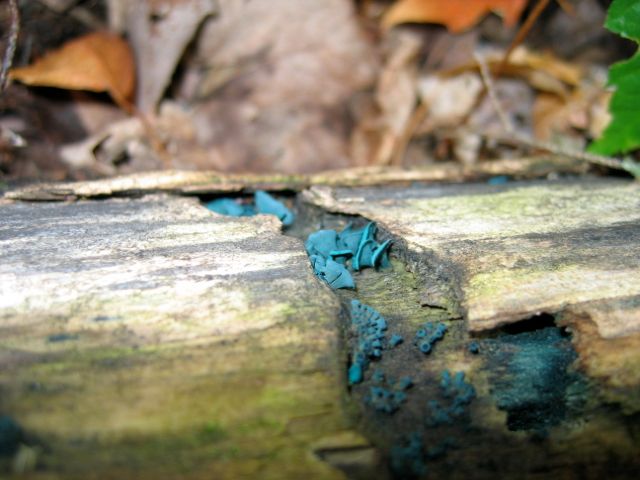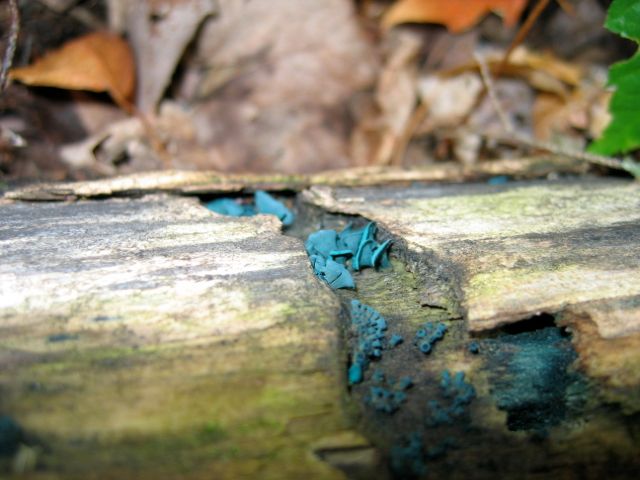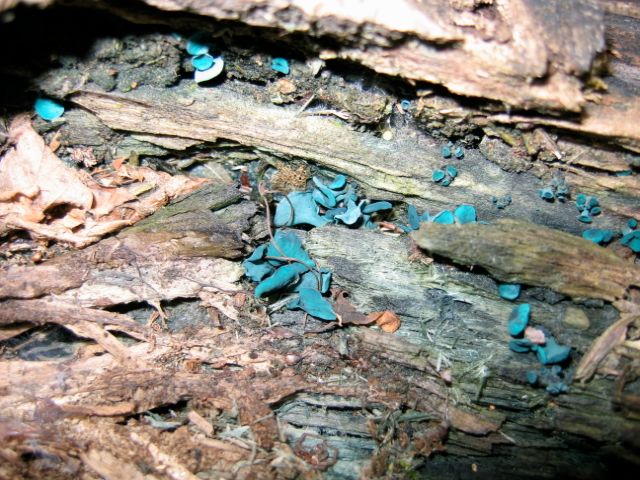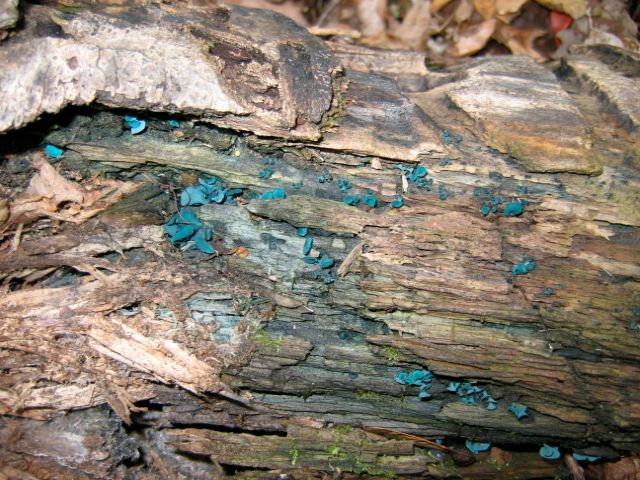Spalted Wood Fungus of the month: Green-stain Chlorociboria
Chlorociboria (sorry, there isn't a common name) is one of the few fungi that turns the wood exactly the same color as its fruiting bodies.
Hiding in the crack of a rotten log lies the fruiting bodies of Chlorociboria.
Well, it certainly has been a while! You’ll have to forgive my absence. Spring and summer are prime fungus hunting seasons. But what I can find, you can also find! So the first ‘Fungus of the Month’ installment will be one of the easiest to find: Chlorociboria.
Collecting
Chlorociboria (sorry, there isn’t a common name) is one of the few fungi that turns the wood exactly the same color as its fruiting bodies. Pieces of blue-green wood are ubiquitous on the forest floor, but the mushrooms themselves can sometimes be difficult to locate. If you’re out looking, here are some handy tips to follow:
1) Start off in a hardwoods stand near a stream, or that is often moist. A few conifers around is fine, but stick to mostly hardwoods
2) Scope out fallen trees that have been down for quite a while. Chlorociboria isn’t fond of freshly fallen timber.
3) Look very carefully in the cracks on the logs. You might find the fruiting body peeking out.
4) Peel back the bark. More than likely you will then find the rest of the mushrooms.
To harvest, I’d suggest taking the mushrooms and some of the green wood surrounding them. Use a small hatchet to select out a section of the log. Place that cut section in a brown paper bag. Do not use plastic. Never, ever use plastic bags when collecting mushrooms. The trapped moisture collects in the bags and causes mold to grow all over your fruiting body. And trust me, you don’t want that mold in your spalting bin.
Once you get home, break apart the wood and sprinkle it throughout your spalting bin. Place the fruiting bodies directly on your lumber and let nature work!
Species Specific Notes
– Chlorociboria likes it wet. This means that the moisture content of the wood in your bins needs to be much higher than you would keep it for producing zone lines.
– Chlorociboria is a slow, slow growing stain. It may take a full year for it to colonize your clear lumber. You can speed the process up by pre-treating your boards with a white rot, like Xylaria polymorpha (Dead Man’s Finger). Pretreating weakens the wood and widens wood pits, making it easier for stain fungi like Chlorociboria to penetrate.
– This fungus fruits in the spring, but you can find its fruiting bodies through the fall, when they will be more numerous.
Got a fungus to share?
Seen anything neat in the woods this summer? Send your photos to [email protected], and I’ll be happy to let you know whether or not you have a spalter on your hands. If you’ve used a specific mushroom for spalting successfully in the past, leave a comment and let us know! And as always, if you have any questions about spalting, just drop a comment below.
Seri
Fine Woodworking Recommended Products

Ridgid R4331 Planer

DeWalt 735X Planer

AnchorSeal Log and Lumber End-Grain Sealer































Log in or create an account to post a comment.
Sign up Log in